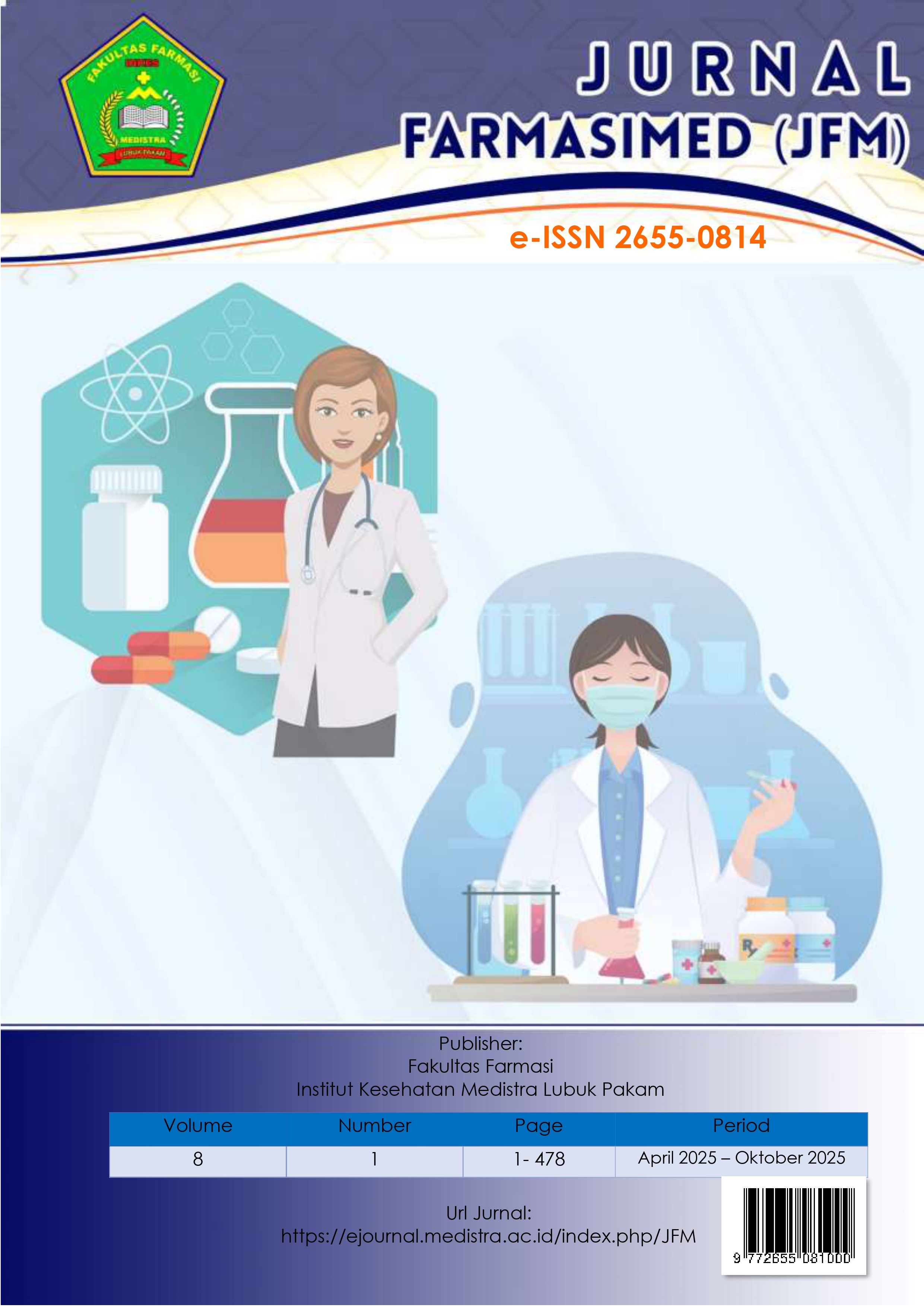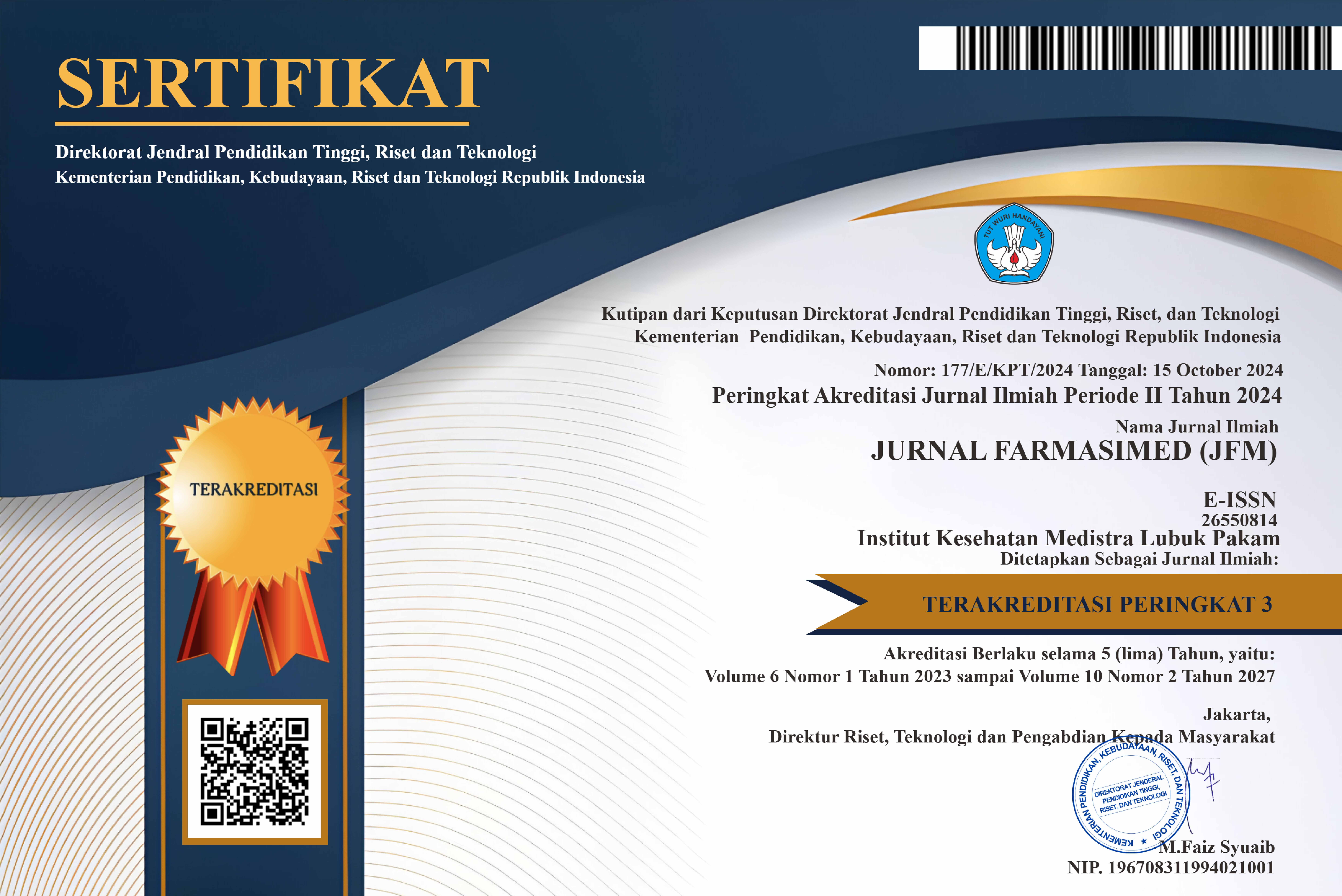The Effect of a Combination of Activated Carbon and Bentonite on Reducing COD, BOD, and TSS Levels in Tofu Industry Wastewater
DOI:
https://doi.org/10.35451/cbxjb379Keywords:
Limbah Tahu, Arang Aktif, Bentonite, AdsorpsiAbstract
Wastewater produced from tofu manufacturing typically contains substantial amounts of organic substances and suspended particles. The concentrations of Biochemical Oxygen Demand (BOD), Chemical Oxygen Demand (COD), and Total Suspended Solids (TSS) frequently surpass the permissible thresholds established in the Regulation of the Minister of Environment and Forestry (Permen LHK) No. P.16 of 2019. Such high levels of pollutants may degrade water quality and pose risks to both aquatic ecosystems and public health in nearby areas. This study investigates the efficiency of combining activated carbon and bentonite, in both raw and activated forms, for reducing BOD, COD, and TSS concentrations in wastewater originating from tofu industries. The BOD test was performed using a five-day incubation at 24 °C, COD was analysed via the closed reflux method, and TSS was quantified using the gravimetric approach. Adsorbent characteristics were examined in accordance with the Indonesian National Standard (SNI), supported by functional group analysis using Fourier Transform Infrared (FT-IR) spectroscopy and morphological observation with Scanning Electron Microscopy (SEM). The results demonstrated that activation enhanced pore development and improved the adsorption capability of both materials. The combined activated carbon and bentonite effectively decreased BOD from 3,600 mg/L to 140 mg/L, COD from 1,500 mg/L to 185 mg/L, and TSS from 320 mg/L to 270 mg/L. All treated parameters met the regulatory quality standards, indicating that the activated mixture of these adsorbents provides an efficient and environmentally sound method for treating tofu processing wastewater.
Downloads
References
[1] Beyan SM, Prabhu SV, Sissay TT, Getahun AA. Sugarcane bagasse based activated carbon preparation and its adsorption efficacy on removal of BOD and COD from textile effluents: RSM based modeling, optimization and kinetic aspects. Bioresour Technol Reports 2021;14:100664. https://doi.org/10.1016/j.biteb.2021.100664.
[2] Widyastuti D, Suprayitno D. Decreasing COD and TSS levels of tofu liquid waste using Kangkungan (Ipomeacracicaulis) with phytoremediation method. IOSR J Env Sci Toxicol Food Technol 2020;14:1–5. https://doi.org/: 10.9790/2402-1411020105.
[3] Marques DG, Domingos J de MF, Nolasco MA, Campos V. Textile effluent treatment using coagulation-flocculation and a hydrodynamic cavitation reactor associated with ozonation. Chem Eng Sci 2024:121094.
[4] Yulianto R, Prihanto RL, Redjeki S. Penurunan Kandungan COD dan BOD Limbah Cair Industri Tahu dengan Metode Ozonasi. ChemPro 2020;1:9–15.
[5] Pradana TD, Suharno S, Apriansyah A. Pengolahan limbah cair tahu untuk menurunkan kadar TSS dan BOD. J Vokasi Kesehat 2018;4:56–62.
[6] Raj S, Singh H, Bhattacharya J. Treatment of textile industry wastewater based on coagulation-flocculation aided sedimentation followed by adsorption: Process studies in an industrial ecology concept. Sci Total Environ 2023;857:159464. https://doi.org/10.1016/j.scitotenv.2022.159464.
[7] Fleyfel LM, Matta J, Sayegh NF, El Najjar NH. Olive mill wastewater treatment using coagulation/flocculation and filtration processes. Heliyon 2024;10.
[8] Hemamathi A, Sukumar B, Aishwarya R, Kruthikameenakshy A, Nivetha V, Pradhiksha J, et al. Treatment of textile waste water using activated carbon method. Mater Today Proc 2023. https://doi.org/10.1016/j.matpr.2023.10.027.
[9] Maulani M, Satiyawira B, Nugrahanti A, Apriniyadi M, Nurfajrin ZD, Young H, et al. Pemanfaatan pengolahan limbah industri tahu menggunakan bentonite. Community Empower 2021;6:1892–8.
[10] Bennemla M, Semaoune T, Sari MC, Houhoune F, Khemaissia S, Bellaloui M, et al. Preparation and characterization of activated carbon from medlar seed by chemical activation with phosphoric acid and its application in uranium adsorption. Biomass Convers Biorefinery 2024:1–14.
[11] Daniel LS, Rahman A, Hamushembe MN, Kapolo P, Uahengo V, Jonnalagadda SB. The production of activated carbon from Acacia erioloba seedpods via phosphoric acid activation method for the removal of methylene blue from water. Bioresour Technol Reports 2023;23:101568.
[12] Maulani M, Satiyawira B, Nugrahanti A, Apriniyadi M, Nurfajrin ZD, Young H, et al. Utilization of tofu industrial waste treatment using bentonite. Community Empower 2021;6:1892–8.
[13] Hasyim UH, Fitriyano G. Pengaruh Konsentrasi HCl dan Massa Adsorbent dalam Pengolahan Limbah Pelumas Bekas dengan Kajian Keseimbangan Adsorpsi Bentonit terhadap Logam Fe. J Integr Proses 2017;6:191–6.
[14] Aritonang B, Ambarwati NF, Sinaga EM, Ritonga AH. Synthesis and Characterization of Activated Charcoal from Salak Skin As an Adsorbent Against BOD, COD, and TSS Levels in Textile Industry Liquid Waste Sintesis dan Karakterisasi Arang Aktif Dari Kulit Salak Sebagai Adsorben Terhadap Kadar BOD, COD dan. Vol 2022;2:2611–26.
[15] Chairunnisa ZN. Efektivitas Adsorben Karbon Aktif dari Tempurung Kelapa untuk Pengolahan Limbah Cair Pabrik Tahu 2023.
[16] Fanani N, Ulfindrayani IF. Sintesis dan Karakterisasi Karbon Aktif dari Limbah bambu Menggunakan Aktivator Asam Pospat (H3PO4). Pros. Semin. Nas. Sains dan Teknol. Terap., vol. 1, 2019, p. 741–6.
[17] WAHYUDI ACHA. Karakterisasi Komposit TiO2 Karbon Aktif Tandan Pisang Menggunakan FTIR Dan SEM-EDX 2021.
[18] Aritonang B, Ritonga AH, Harefa K. Reduction of BOD, COD, and TSS in Textile Wastewater Using Bentonite Activated Charcoal Adsorbent. J Farm 2025;7:381–9.
[19] Diharyo S, Damanik Z, Gumiri S. Pengaruh lama aktifasi dengan H3PO4 dan ukuran butir arang cangkang kelapa sawit terhadap ukuran pori dan luas permukaan butir arang aktif. Pros. Semin. Nas. Lingkung. Lahan Basah, vol. 5, 2020, p. 48–54.
[20] Aritonang B, Ritonga AH, Harefa K, Wiratma DY. Purification of used Cooking Oil using a Combination of Activated Carbon and Bentonite Adsorbents. J Farm 2024;7:31–40. https://doi.org/10.35451/jfm.v7i1.2331.
[21] Bukit BF, Sirait SH. KARAKTERISASI NANOKOMPOSIT BENTONIT DAN KITOSAN SERTA TITANIUM DIOKSIDA MENGGUNAKAN FTIR. JUITECH J Ilm Fak Tek Univ Qual 2020;4:49–53.
[22] Haskim MH. PENGARUH KONSENTRASI ASAM KLORIDA (HCl) TERHADAP AKTIVASI BENTONIT ALAM DAN STUDI KINETIKA PADA ADSORPSI ION KADMIUM (Cd2+) UNTUK APLIKASI PENGOLAHAN LIMBAH INDUSTRI MINYAK DAN GAS BUMI 2023.
[23] Rasyida A, Pradipta TR, Wicaksono ST. Studi Pengaruh Penambahan PVA dan Bentonit Terhadap Morfologi dan Sifat Fisik Komposit Berbasis Hidrogel Alginat Sebagai Kandidat Material Perancah untuk Regenarasi Tulang Rawan. J Tek ITS 2019;7:F320–5.
[24] Bukit FRA, Frida E, Bukit N, Bukit BF. KARAKTERISASI DAN ANALISIS BENTONIT ALAM SEBAGAI BAHAN PENGISI KOMPOSIT. JUITECH J Ilm Fak Tek Univ Qual 2021;5:54–62.
[25] Pratiwi AT, Widiatmono BR, Wirosoedarmo R. Adsorpsi minyak dan timbal (Pb) pada air limbah bengkel mobil menggunakan bentonit dan cangkang telur ayam (Gallus domesticus) sebagai adsorben. J Ilmu Lingkung 2024;22:125–31.
[26] Al Adawiyah SU, Nur A. PENGARUH PENGGUNAAN KARBON AKTIF CANGKANG KELAPA SAWIT UNTUK MENURUNKAN BOD, CPD, DAN TSS LIMBAH CAIR KELAPA SAWIT. Pros. Semin. Nas. Teknol. Ind., vol. 8, 2021, p. 436–41.
[27] Ruskandi C, Siswanto A, Widodo R. Karakterisasi fisik dan kimiawi bentonite untuk membedakan natural sodium bentonite dengan sodium bentonite hasil aktivasi. J Polimesin 2020;18:53–60.
Downloads
Published
Issue
Section
License
Copyright (c) 2025 Barita, herlina, Ritonga

This work is licensed under a Creative Commons Attribution-NoDerivatives 4.0 International License.
Copyright in each article is the property of the Author.

























